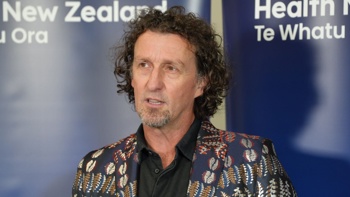The Christ Church Cathedral rebuild has a funding gap of $114 million - and if $30m isn’t secured by August this year, the project will be indefinitely mothballed, it has been announced.
And the Christ Church Cathedral Reinstatement Limited said a “mothballed scenario” would “be hidden from view, and people will not be able to visit it, or preserve it, because it will remain a construction site in suspension”.
The iconic building had lain in ruin for many years after the Canterbury earthquakes.
In 2017 the Anglican Synod voted by a narrow majority to reinstate the building, with an estimated cost of $104m.
The CCRL Trust was then set up to fundraise the money needed.
Before voting the then government pledged a $15m taxpayer contribution, as well as a $10m loan.
Christchurch City Council also committed $10m in ratepayer funds.
By 2020 the cost of the project increased to $154m, about 48 per cent higher than originally estimated.
The overall cost has now blown out to $248m.
CCRL Mark Stewart chair said he was confident a further $26 million could be gathered through fundraising.
“The Bishop has committed to securing additional contributions from the Anglican Church of $16 million, leaving a funding gap of $114 million,” he confirmed today.
“This is an incredibly challenging position to be in, particularly when we are more than a third of the way through the entire reinstatement.”
 The roof was removed as part of the Christ Church Cathedral Reinstatement Project. Photo / George Heard
The roof was removed as part of the Christ Church Cathedral Reinstatement Project. Photo / George Heard
He explained why the cost had increased so dramatically.
“Last year we instigated a comprehensive review of the costs and timeline of the reinstatement programme. March last year was the first time we had full access to the inside of the Cathedral since the 2011 Canterbury earthquakes.
“Gaining access gave us new information and we felt it prudent to initiate a full project review.
“With safe, unconstrained access to the Cathedral, we undertook further extensive investigation to validate assumptions and consideration of the work required to strengthen and reinstate the Cathedral.
“While we did this, we deliberately slowed work on the site.”
Stewart said the findings of the project review made it apparent that continuing the original project work plan would be “too expensive and represent too much risk“.
“On the recommendation from the project review team, the CCRL Board has decided to reduce the scope, cost and risk of the project by removing the deep foundation for the tower and the lower courtyard, thus mitigating that risk,” he said.
“By doing this the overall cost of the project is now $248 million.
“Our urgent need is a funding stream of $30 million that we can access by September 2024 so we can continue the strengthening.
“We then need further funding to allow us to complete the reinstatement by October 2031. We are managing our remaining funds carefully in the meantime to maintain operations.”
Stewart said the Minister of Finance Nicola Willis had been briefed about and “understood” the situation and a discussion had been “initiated” with the council about funding options.
“We are now armed with the true picture of the cost and philanthropy alone will not provide sufficient funds to complete the project.”
 Christ Church Cathedral in 2006 before the quakes. Credit:NZPA/Ross Setford
Christ Church Cathedral in 2006 before the quakes. Credit:NZPA/Ross Setford
Christchurch Mayor Phil Mauger said resolving the issue required the combined effort of the CCRL, the church, the city and central government.
“Many of our residents, businesses and visitors will see the Cathedral as the final piece of the rebuild,” he said today.
“But we must acknowledge that the financial pressure all of these groups are under at the moment will make this challenging.”
Stewart said the Cathedral was not only a place of worship for the Anglican Church, it was also an important civic and heritage building and a well-used community space.
“We recently commissioned New Zealand Institute of Economic Research to estimate the total economic value of reinstating Christ Church Cathedral. They estimated that the reinstated Cathedral could result in additional tourism spending of up to $20.8 million per year,” he said.
“The NZIER report stated that there has been around $1 billion of private and public sector investment in the streets around Cathedral Square since the earthquake, and a further $1 billion is planned for the next 10 years. They report that the Cathedral reinstatement will unlock the full value of these investments and support the wider regeneration of Christchurch.”
 Inside the damaged icon in 2020. Photo / Christchurch Cathedral Reinstatement Project
Inside the damaged icon in 2020. Photo / Christchurch Cathedral Reinstatement Project
Stewart said the reinstatement project “has been and remains very complex”.
“Essentially our assumptions at the start of the project were based on what advice we knew from experts and initial investigations,” he said.
“Getting inside the Cathedral in March last year was the last piece of the puzzle informing our design and construction methodology.
“Unfortunately, some of our early assumptions were proven wrong.
“For example, once inside the Cathedral we realised that the foundations were not as deep as perimeter foundations or as indicated in the 1881 drawing and the ground investigations raised more issues against assumed sequence and method of work for the foundations.”
He said tests conducted late last year in the region of the tower had highlighted a “unique anomaly creating challenges in the construction of the deeper foundation beneath”.
 Christ Church Cathedral on the day of the quake. Photo / Hamish Clark
Christ Church Cathedral on the day of the quake. Photo / Hamish Clark
“This was despite obtaining a consent and carrying out dewater trials to the east in 2022, we could not have foreseen this problem happening, nor that it would occur in the worst possible locations, he said.
“This has had a serious impact on the method, time and risk associated with the base of the tower and the lowered courtyard.
“Finally, we have been able to scope and quantify the amount of masonry work required to complete the project and obtained cost assessments in association with our masons.
“These figures indicate a much greater scope and time than allowed for in the estimate.”
Steward said a sub-committee had been established to support the CCRL - led by two of its directors, retired Fulton Hogan chief executive Lindsay Crossen and leading New Zealand construction executive Brian Nightingale.
“The project review has resulted in a comprehensive understanding of programme, cost and residual risks, including resourcing issues, construction methods and sequences for completing the reinstatement,” he said.
 The state of the church in 2020. Photo / Logan Church
The state of the church in 2020. Photo / Logan Church
Further, all aspects of the main contractor Naylor Love’s cost estimate and the overall reinstatement design had been reviewed.
“The stabilisation works were challenging, and unfortunately took longer than first envisaged, mainly due to the many access and sequencing constraints along with the understandable stability concerns,” said Graeme Earl from Naylor Love Canterbury.
“The revised budget and timetable as part of the project review is now reflective of what we, the collaborate team of designers and constructors now know, and inclusive of revised design/sequencing solutions to recognise and minimise the impacts of risk.”
Bishop Peter Carrell said the Anglican Church continued to look for further funding - but understands the “very difficult” situation the project is facing.
“Mothballing the Cathedral is something we hoped we would never have to contemplate – and we are optimistic of finding a solution to avoid this situation,” he said.
“The Cathedral is integral to our Diocese, and we want it open again to serve the people of Christchurch and the many visitors to our region.
“I am heartened by recent research that shows that the local passion for the building is strong, with 74 per cent of residents surveyed considering the Cathedral essential to the city’s future and 62 per cent wanting it rebuilt.
“The Cathedral would not have been built in 1881 without the full weight of the community behind it. It is now critical we demonstrate the same leadership as our 19th century Canterbury pioneers in returning the Cathedral to life.”
This article was originally published on the NZ Herald here.
Take your Radio, Podcasts and Music with you









